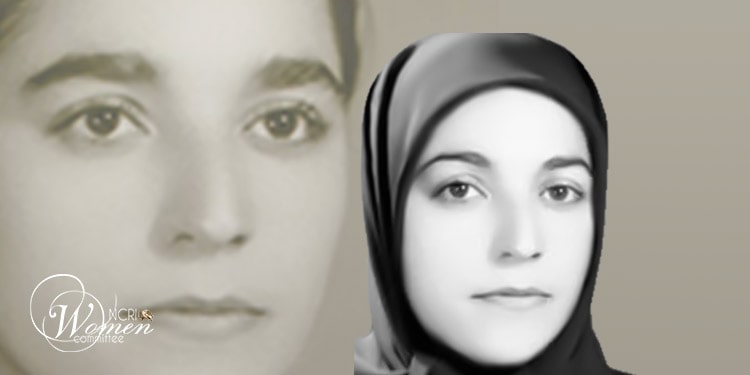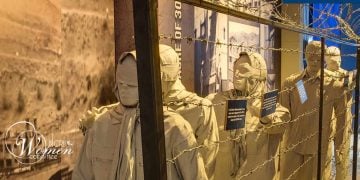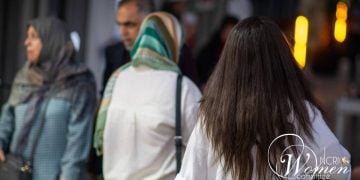Stories of women’s resistance – The 1988 massacre
In the fourth part of the series of conversations regarding the 1988 massacre, Fereshteh Akhlaghi introduces a prominent female militant, Ashraf Alsadat Ahmadi Alonabadi also known as Ashraf Ahmadi.
A married 47-year-old, mother to 4 children, who spent a decade (3 years during the shah’s reign with another 7 under Khomeini) as a political prisoner in Iran’s notorious prisons.
Being a political activist for a woman in that era was a difficult iconoclastic choice as the dominant culture at the time considered women suitable for household tasks and raising kids without any role in socio-political realm.
However, Ashraf Ahamadi overcame these barriers during the despotic Shah’s era by organizing and leading rallies. Her activism was in part influenced by the time she spent attending the court hearings of her elder brother and other members of the People’s Mojahedin Organization of Iran (PMOI/MEK).
More details about Ashraf’s personal life will be provided in the following paragraphs by what her colleagues described.
“From the moment I found myself by Ashraf’s side in fighting against the Shah’s dictatorial regime, I saw how she could handle the most difficult and complicated situations with a high sprit of hope and confidence. In her view, life was nothing but a struggle for freedom and she was willing to pay any price for it.
“Her determination and initiative in accepting responsibility to promote the values of the People’s Mojahedin Organization was very prominent. For a period of time she was responsible for providing intelligence between imprisoned PMOI members and those outside. She was also in charge of holding rallies in Tehran, Qum and other cities, providing information to various media outlets and organizing weekly meetings for the family members of People’s Mojahedin Organization.”
After the PMOI suffered heavy blows in 1971 from the Shah’s SAVAK, Ashraf remained in contact with Fatemeh Amini and participated in all the activities of the families of imprisoned PMOI members to expose the Shah’s crimes against them. Enduring under torture was one of the lessons she learned from Fatemeh Amini. Despite the considerable information she had from PMOI members, she did not say anything under torture and SAVAK interrogations. So, she became an icon of resistance and endurance for other political prisoners.
Ashraf’s political activities ultimately led to her arrest by the Shah’s secret police, known as SAVAK. Now let’s hear another phase of her life in captivity during the Shah’s reign from one of her comrades.
“While pregnant and suffering from severe heart disease, she was arrested in the summer of 1975. Her pregnancy and her vulnerable health condition didn’t prevent SAVAK from putting her under severe pressure and torture. SAVAK increased the level of torture with hopes of extracting valuable information, but Ashraf did not concede or give in to their demands.
“Under these circumstances, she gave birth to her daughter in Evin Prison and raised her for 5 months. She became an icon of resistance and endurance for other political prisoners.”
Ashraf was sentenced to 15 years in prison and was released a few months before the fall of the Shah’s regime by the heroic people of Iran.
After the revolution, when Khomeini came into power in 1979, Ashraf was once again arrested and imprisoned for being a member of the People’s Mojahedin Organization. It was during this period of time that Khomeini completed the work that the Shah had left unfinished, executing her in a cruel manner with no due process.
A report from one of the Ashraf’s cellmate reads as follows: “In the summer of 1981, while being at ward 311 in Evin Prison, I heard about her capture. In the beginning of her arrest we were at different cells and we had no direct contact, but 8 months later we found ourselves together in room 4 in ward 240. Room 4 was full of adamant political prisoners. (Assadollah) Lajevardi, known as the butcher of Evin Prison, was quite sensitive due to the presence of Ashraf in this room. The situation was such that anyone returning from interrogation could not go and talk to Ashraf or establish a close relationship with her. As soon as the guards would notice or learned of such events, they would increase pressure on not only Ashraf, but on the other Mojahedin prisoners as well.”
Fereshteh Akhlaghi explained that the more pressure and torture the women faced in Evin prison (particularly Mojahedin sympathizers), greater acts of kindness, self-sacrifice and camaraderie became seen and felt.
Having experienced interrogation during the Shah’s era, Ashraf Ahmadi helped many female prisoners with advice to not let the interrogators extract information from them. Lajevardi was aware of this and assigned a spy to report to him on whoever was in close contact with Ashraf. Anybody who was caught would face grave consequences.
Ashraf Ahmadi refused to reply to questions during the interrogations. She did not even appear in the court and had no convictions.
In Evin Prison, Lajevardi occasionally held some meetings at a hall called Hosseiniyeh and forced the prisoners to attend, but Ashraf did not even participate in a single meeting. When this was reported to Lajevardi, he replied: “Leave her alone; she is crazy.”
These women who were aware of the guards’ watchful eyes used new tactics to prevent them from finding out about the information that was being relayed between the prisoners.
Thus, the prisoners’ rendezvous for the exchange of information mainly took place at bathroom or during the rest hours at night. Ashraf was very cautious in this regards not to leave any trace so she could continue her contacts with others.
In those years of captivity, courage and resistance were something that all women, who knew Ashraf, learned from her. She didn’t think of the prison bars; the hope of freedom was the only thing that occupied her soul.
Ashraf, a pioneer fighter after being in prison for 7 years with a brilliant record of courage and endurance overcame all inhumane conditions but was finally hanged on July 31, 1988 in Evin prison; in a matter of 3 months in 1988 more than 30,000 political prisoners were executed in Iran.
Three months after Ashraf’s execution, the regime’s agents informed her family and handed over her bag to her mother without saying a word about Ashraf’s burial place.
Besides Ashraf, one of her brothers, Ahmad Ahmadi was murdered under torture by SAVAK in 1975, and her other brother, Ali Ahmadi, was killed in Liberty Camp in Iraq when the Iranian regime’s proxies hit it with missiles.





















